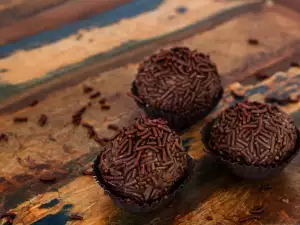If you're thinking about long-term chocolate storage, here's what you need to know about its shelf life, what types of chocolate last longest and how to package it.
Does chocolate spoil?
Plain chocolate does not spoil in the sense, that it becomes unsafe to eat. This is because chocolate has very little moisture and is considered "microbiologically safe". However, when stored for a long time, the fats in the chocolate can go rancid and give it an unpleasant taste. The good news is that the cocoa in chocolate contains natural antioxidants, so it doesn't go rancid as quickly as other fatty foods.
Chocolate can also change its appearance and texture when stored for a long time or stored at low temperatures in the refrigerator. Fats and sugars can migrate outward and cause a whitish film on the outside of the chocolate. It's still safe to eat, but it doesn't look as appealing.
Chocolate expiration date
The shelf life of chocolate is approximately 9-24 months. It varies depending on the type of chocolate and storage conditions. Dark chocolate has the longest shelf life, followed by regular milk chocolate. White chocolate and chocolates with a filling have a shorter shelf life.
Note that these expiration dates do not indicate when the chocolate will become unsafe to eat. Rather, they are a guide to how long it will take before the chocolate starts to aquire a whitish color, change texture or go rancid.
Dark chocolate - 24 months at moderate temperature (12 to 20°C) - 24 months in a warm place (above 20°C);
Milk chocolate - 16 months at moderate temperature - 12 months in a warm place;
White chocolate - 16 months at moderate temperature - 12 months in a warm place;
Chocolate with cream filling - 18 months at a moderate temperature - 12 months in a warm place;
Chocolate with nuts - 12 months at a moderate temperature - 9 months in a warm place.
Also check out some delicious chocolate dessert ideas:



















Comments